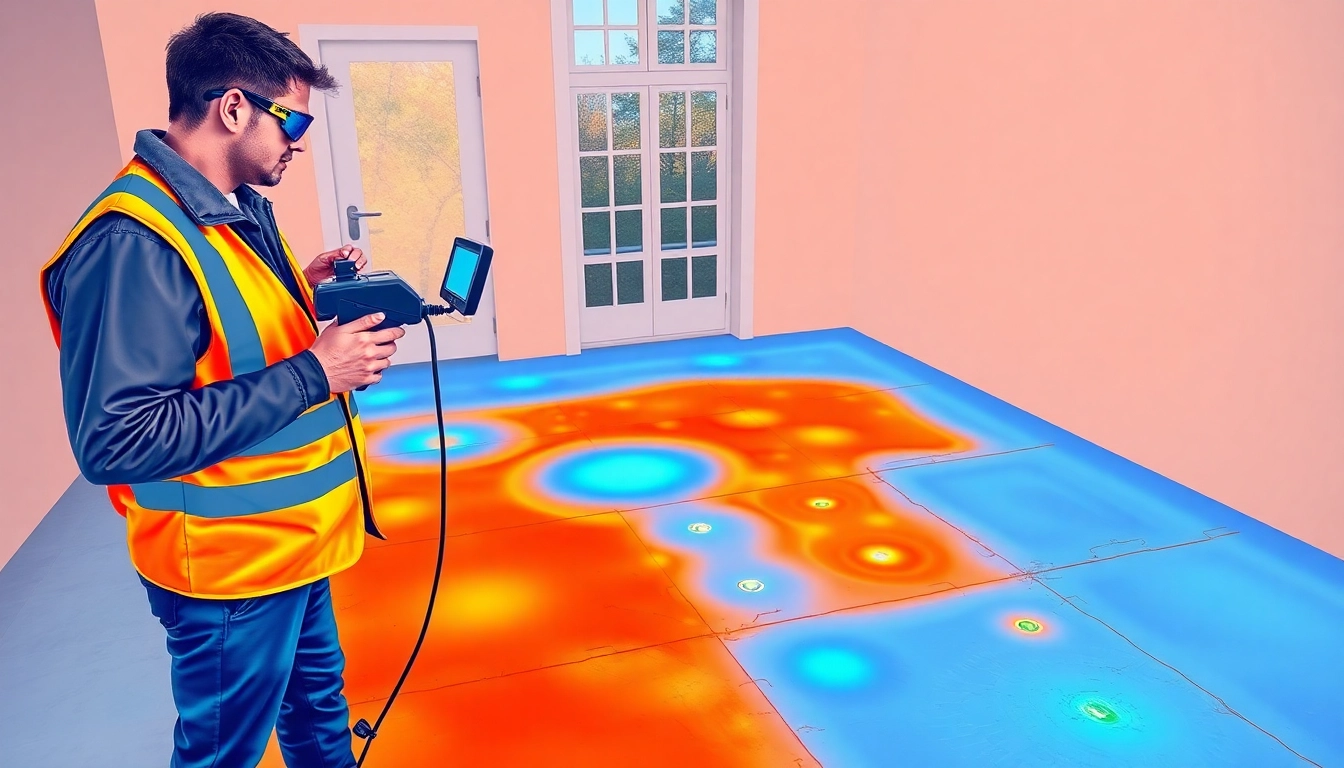Understanding Slab Leak Detection
What is Slab Leak Detection?
Slab leak detection refers to the process of identifying water leaks that occur beneath the concrete foundation of buildings. These leaks can cause significant damage if left unnoticed and can compromise the integrity of the structure. The term ‘slab leak’ is used because these leaks typically occur in the plumbing pipes installed under the concrete slab that acts as the foundation of homes and commercial properties. Due to their hidden nature, slab leaks can be challenging to detect without specialized equipment and expertise. Homeowners must recognize the critical importance of detecting these leaks early to prevent extensive and costly repairs.
Common Signs of Slab Leaks
There are several indicators that may suggest the presence of a slab leak. Homeowners should watch for the following:
- Increased Water Bills: A sudden spike in your water bill without apparent cause can indicate a hidden leak beneath the slab.
- Wet Spots on Floors: Unexplained puddles or dampness on the floor, particularly in areas not exposed to moisture, can signal a leak.
- Sound of Running Water: If you can hear water running when all fixtures are off, it may mean there’s a leak in your plumbing.
- Cracks in Walls or Floor: Structural changes like cracks in the walls or the foundation can result from excess water pooling underground.
- Low Water Pressure: A noticeable drop in water pressure can occur with a slab leak, affecting daily activities like showering or washing dishes.
Why Slab Leak Detection is Crucial for Homeowners
Detecting slab leaks promptly is crucial for several reasons:
- Preventing Extensive Damage: Water leaks can lead to serious structural problems if not addressed swiftly, including mold growth and foundation issues.
- Cost-Effective: Early detection can save homeowners substantial repair costs that grow exponentially as water damage spreads.
- Health Concerns: Damp conditions can foster mold and mildew, posing health risks to inhabitants.
- Conserving Water: Identifying leaks contributes to water conservation efforts, aligning with environmental sustainability goals.
Tools Used in Slab Leak Detection
Modern Technologies for Accurate Slab Leak Detection
With advancements in technology, the methods used for detecting slab leaks have become more precise and less invasive. These tools help identify leaks quickly, minimizing disruption to the home. Some of the tools commonly used include:
- Acoustic Listening Devices: Used to detect the sound of water escaping from pipes, these devices can pinpoint the leak’s location accurately.
- Moisture Meters: These devices measure the moisture levels in various materials, helping to identify areas that may be affected by a leak.
- Ground Penetrating Radar (GPR): This technology allows professionals to see below the surface and locate leaks without excavating the floor.
Thermal Imaging & Infrared Technology in Slab Leak Detection
Thermal imaging cameras are among the most effective tools in slab leak detection. They work by detecting temperature differences in surfaces that indicate the presence of water. For instance:
- Warm areas on the floor could indicate water escaping from a hot water line.
- Cooler zones may signify pooling water beneath the slab.
These tools are invaluable because they allow for non-invasive detection, meaning the inspection can happen without drilling or cutting into the flooring.
Traditional Methods vs. Technological Advancements
Historically, slab leak detection relied on trial and error techniques, such as checking visible plumbing for leaks or cutting into suspects areas. However, such methods often resulted in unnecessary damage to the property. Today, technology favors precision, thereby significantly reducing repair time and costs:
- Traditional Methods: Involves manual inspection and educated guesswork, often leading to invasive measures.
- Modern Technologies: Incorporate gadgets and software that provide real-time data, minimizing the need for extensive physical investigation.
How to Prepare for Slab Leak Detection
Identifying Areas to Inspect for Slab Leaks
Before calling in professionals, homeowners can pinpoint areas that may require inspection. Thoroughly check:
- Basements and crawl spaces, if applicable, for signs of dampness.
- Areas near water heaters, toilets, and sinks where plumbing runs underneath the slab.
- Check for any previous signs of leaks or foundation issues that may require further attention.
Gathering Necessary Information Before Inspection
Homeowners can expedite the detection process by compiling relevant information, such as:
- Water bills over the past few months to highlight any abnormalities.
- Previous plumbing issues or repair history that might give insights into current problems.
- A list of all observed symptoms, which can assist technicians in diagnosing the issue more efficiently.
Choosing the Right Professionals for Slab Leak Detection
When hiring a slab leak detection service, homeowners should consider the following:
- Experience: Look for companies that specialize in slab leak detection and have a proven track record.
- Technology: Inquire about the tools and methods they employ to ensure the most effective detection.
- Reviews and Recommendations: Check online reviews and seek recommendations to gauge customer satisfaction and reliability.
Best Practices for Slab Leak Detection
Steps for an Effective Slab Leak Detection Process
An effective slab leak detection process typically involves several key steps:
- Initial assessment of visible signs of leaks.
- Use of acoustic devices to listen for leaks.
- Utilization of thermal imaging to pinpoint affected areas.
- Confirm findings through moisture meters where necessary.
- Develop a solution plan based on the confirmed leak location.
Preventing Future Slab Leaks: Maintenance Tips
While detecting slab leaks is paramount, prevention is equally essential. Here are some maintenance tips to help avoid future issues:
- Regular Inspections: Schedule routine inspections of your plumbing system to catch potential problems early.
- Monitor Water Bills: Keep an eye on your water usage and bills to spot sudden increases that may suggest leaks.
- Maintain Proper Drainage: Ensure the soil around your home’s foundation is graded correctly to direct water away, preventing pressure on the foundation.
Understanding the Costs Involved in Slab Leak Detection
The cost of slab leak detection varies widely based on several factors:
- Location: Your geographic area can significantly influence service costs.
- Technology Used: Advanced detection tools may come at a premium but can lead to savings in damages.
- Extent of Damage: If extensive repairs are required, the costs of fixing the leak and repairing the resulting damage will grow correspondingly.
Conclusion: Ensuring Your Home’s Safety with Slab Leak Detection
Recapping the Importance of Timely Slab Leak Detection
In conclusion, slab leak detection is not merely a maintenance task; it’s a critical intervention that can protect a home’s structural integrity and overall value. Early detection can save thousands in repair costs while ensuring a safe living environment.
Benefits of Proactive Slab Leak Detection
Proactively finding and addressing slab leaks comes with numerous benefits:
- Minimized repair costs and extensive damage control.
- Enhanced property value by maintaining the integrity of the foundation.
- Peace of mind knowing that your home is safe from unseen water damage.
Finding Reliable Slab Leak Detection Services
Homeowners seeking to mitigate potential slab leak issues should consider seeking professional help. Browse options and consider those that emphasize experience and modern technology in their services. For comprehensive assistance, consider reaching out to experts in Slab Leak Detection to ensure your home’s plumbing system remains sound.









Leave a Reply